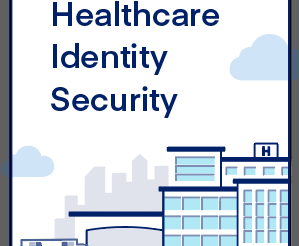Three Ways to Improve Healthcare Compliance and Innovation with Identity Security

Authored by: Matthew Radcliffe
Did you know there were more than 29 million healthcare records breached in 2020, and the second-leading cause of those breaches was unauthorized access?[1]
If the last year has taught us anything, it’s that life can be unpredictable and sometimes we are forced to change — rapidly. So how does one of the most regulated industries embrace growth, prevent security breaches and drive innovation for modernization?
The critical role of identity security.
An identity security solution can solve for these challenges in the following three ways.
As healthcare organizations transition to cloud-based solutions and remote collaboration, the task of managing credentials across the enterprise becomes more complex and time-consuming. Healthcare IT professionals must be able to quickly answer:
- Who has access to which systems and applications?
- Is their level of access appropriate for their role?
- Are they using their access responsibly?
With most healthcare IT teams woefully short on manpower, manual processes for managing credentials simply won’t work. An automated solution makes the provisioning, transfer and de-provisioning of accounts faster, easier and more secure, lessening the burden on valuable IT resources.
Healthcare organizations can have thousands of employees working in multiple locations. To keep everything running smoothly, clinical workflow managers must be able to:
- Quickly onboard employees so they have access to the tools they need to serve patients on day one.
- Manage the dynamic access requirements of employees who take on several roles in different locations.
- Immediately terminate or adjust access when an employee transfers or leaves the organization.
An automated solution enables secure integrations among core clinical and administrative applications into a single comprehensive workflow that can streamline these important tasks.
The fast-paced, constantly changing access provisioning that occurs at the average healthcare organization is likely to keep compliance officers awake at night. Things they might worry about include:
- Do my clinicians make appropriate access decisions under pressure?
- Are my clinical workflow managers terminating access as soon as an employee leaves the organization?
- Are any of my employees putting us at risk for a data breach, unknowingly or otherwise?
To help meet regulatory requirements efficiently and consistently, an identity security solution provides visibility into who has access to what applications and plaforms.
To discover the benefits of an automated identity security solution within the context of your healthcare responsibilities, please contact us at [email protected].
[1] “2020 Healthcare Data Breach Report: 25% Increase in Breaches in 2020.” HIPAA Journal, Jan. 19, 2021. https://www.hipaajournal.com/2020-healthcare-data-breach-report-us/
The post Three Ways to Improve Healthcare Compliance and Innovation with Identity Security appeared first on SailPoint.
